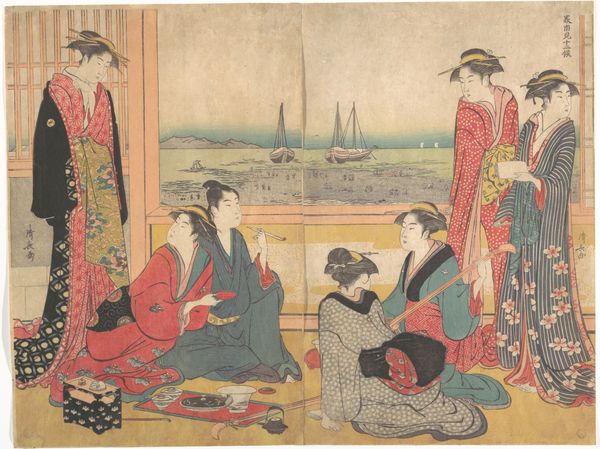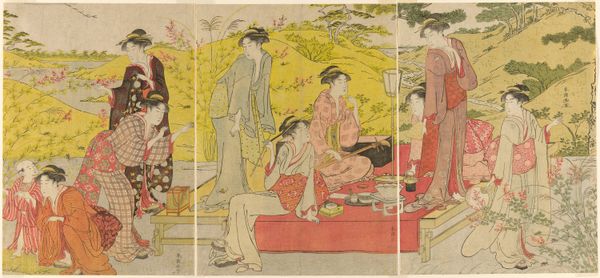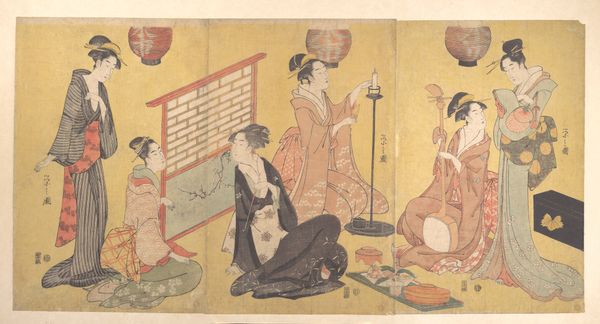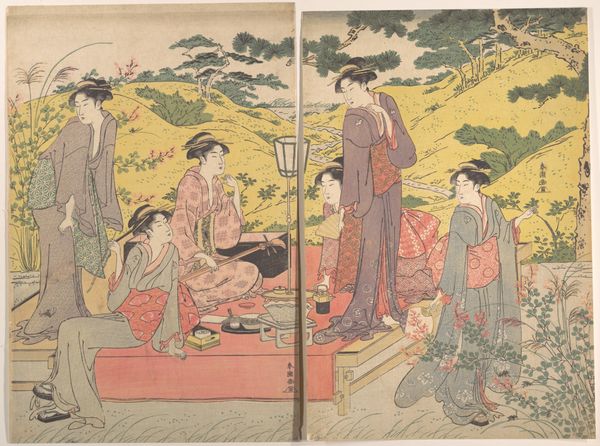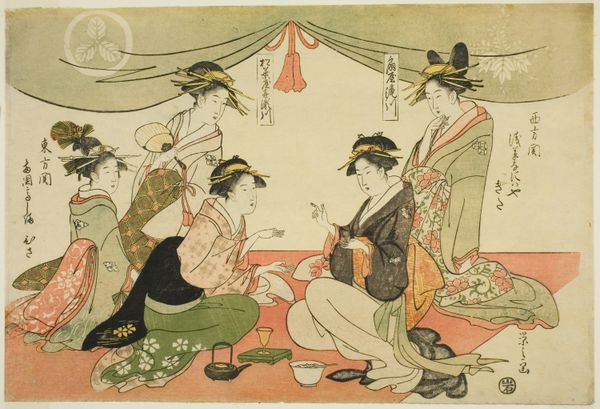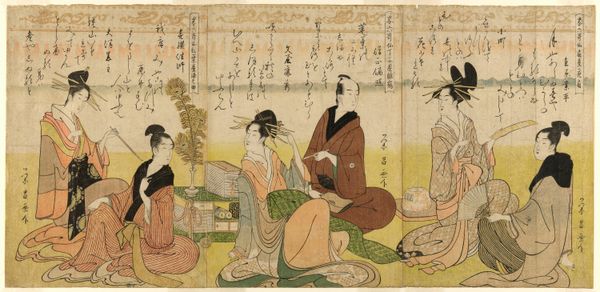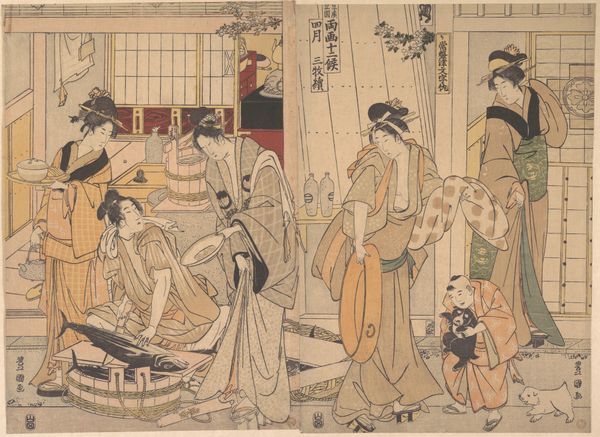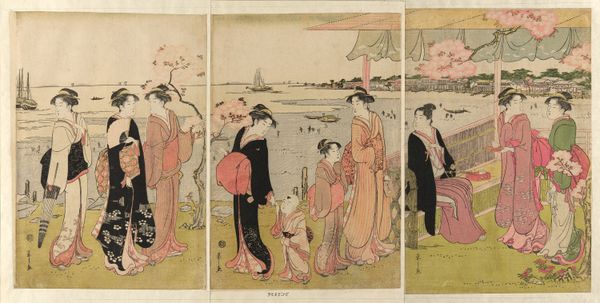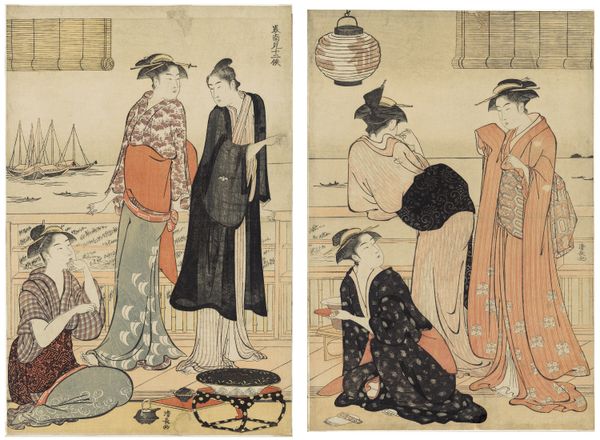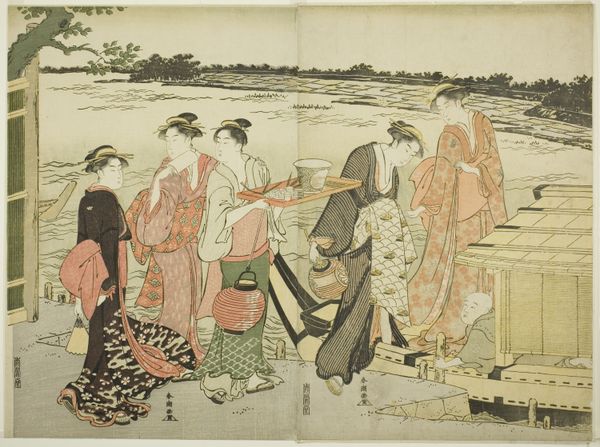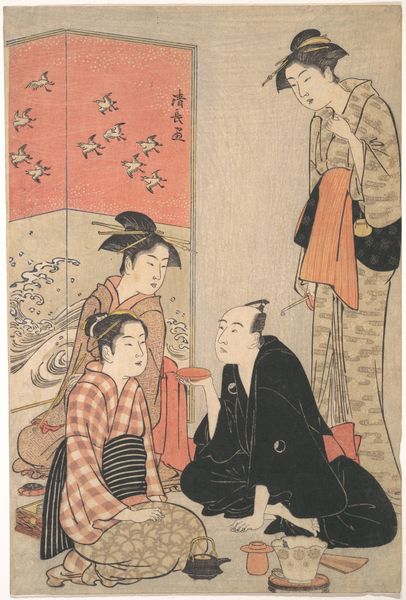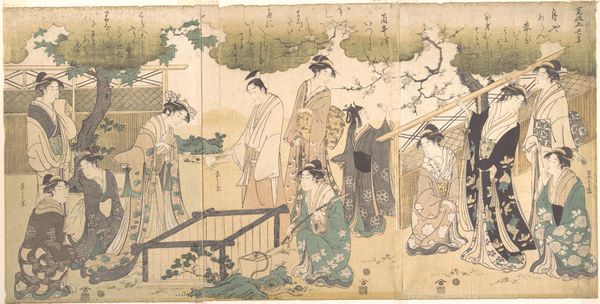
A Party of Merrymakers in a Tea-house at Shinagawa 1773 - 1793
0:00
0:00
print, woodblock-print
#
portrait
# print
#
asian-art
#
ukiyo-e
#
figuration
#
woodblock-print
#
genre-painting
Dimensions: 15 x 20 3/8 in. (38.1 x 51.8 cm)
Copyright: Public Domain
Editor: Here we have Torii Kiyonaga's woodblock print, "A Party of Merrymakers in a Tea-house at Shinagawa," created sometime between 1773 and 1793. There's a sense of quiet intimacy about it, despite the gathering of so many figures. What draws your eye when you look at this print? Curator: I'm immediately struck by the way Kiyonaga uses this genre scene to subtly explore the lives of women in the Edo period. Consider how the setting—a teahouse in Shinagawa, a district known for its entertainment—functions almost as a stage. The women are both performers and spectators, negotiating their roles within a complex social structure. Notice the interplay of gazes, the way some women are engaged in conversation while others look out towards the sea. How does this dynamic speak to the limited agency afforded to women in that era, yet also hint at their resilience and inner lives? Editor: I see what you mean. It's more than just a snapshot of a social gathering; it's almost a commentary. Do you think Kiyonaga was intentionally trying to make a statement? Curator: The 'floating world' prints, or ukiyo-e, often served as a form of social critique, albeit subtly. While the print celebrates the pleasure and leisure of the floating world, it's important to consider what these representations might be masking. The women's elaborate attire and idealized beauty standards are constructed performances. What kind of commentary might the artist be making, showing a world from which a great part of the population was excluded? Editor: That makes me think about the people not pictured here, the workers who made this lifestyle possible. Curator: Exactly. This work is not simply a depiction, it's an intersection, if you will, between commerce, desire, and class. And perhaps even between performance and self-awareness. Editor: That's a very different interpretation than what I initially thought! I appreciate how you highlighted the social layers within such a seemingly simple scene. Curator: Indeed. It is about expanding our perspective. Understanding how historical context and social dynamics inform the artist's choices deepens our understanding, creating a richer dialogue between the viewer and the art.
Comments
No comments
Be the first to comment and join the conversation on the ultimate creative platform.
